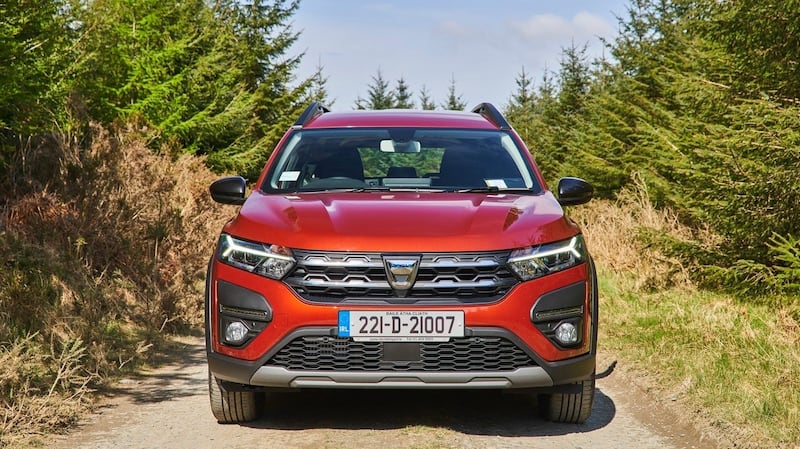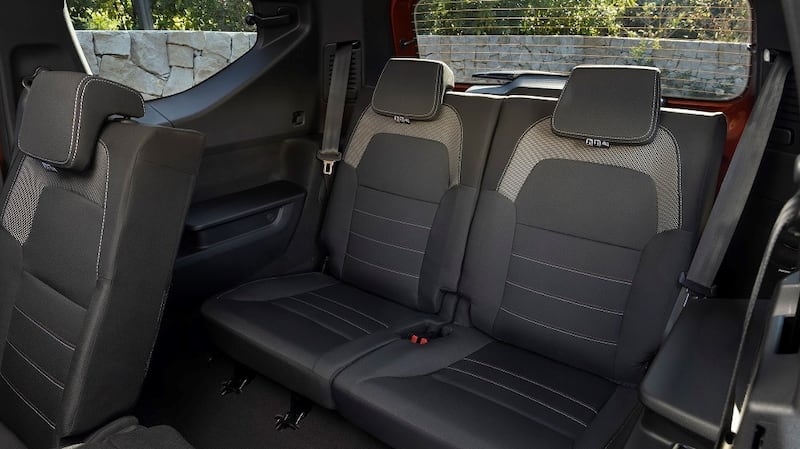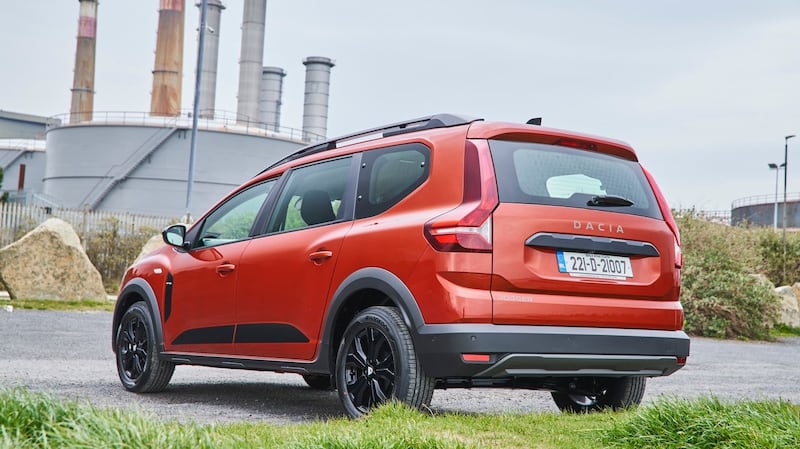Quite how you pick a rival for the Dacia Jogger is a bit of a puzzler. There just aren't very many family-sized, relatively affordable seven-seat cars left. Renault, which basically invented this segment with the Scenic, has retreated behind the SUV wall, just as has Opel, Ford, Citroen, Peugeot and so many more. The practical MPV is just no longer a thing.
Well, almost no longer a thing, because the Jogger is here to prove that not only is a seven-seat MPV still a good idea, it's also one that buyers will go for – some 700 people have been in touch with Dacia Ireland to show an interest in the car already, and there are about 300 firm orders for it, against a likely 500 that will be shipped to Ireland this year.
What is a Jogger? Don't be fooled by the relatively tall ride height nor the modish black plastic lips for the wheel arches – this is, quite simply, not and SUV; it's an MPV and is all the better for it. While it borrows some styling cues from the chunkier Dacia Duster, it's actually very closely related to the Sandero hatchback (a close relationship that has caused some crash-test result angst). The forward section of the Jogger basically is a Sandero – similar styling, same workmanlike dashboard, same 1.0-litre 110hp petrol turbo engine.
Behind the driver's seat, there's a 40mm kink in the roofline that adds extra headroom, and also puts one in mind of either an original Land Rover Discovery or a Matra Rancho (ask your grandad. . .). It allows for a "stadium" seat layout, whereby each row of seats is set slightly higher than the one in front, allowing everyone a decent view out. There's plenty of legroom in the back – even with the front seat pushed almost all the way back, there was sufficient room for grown-up knees and even the centre rear seat isn't too cramped.

The Jogger’s party trick is in the boot, of course. Here we find two extra seats, which will be fitted as standard, even on the cheapest €23,290 base model. They don’t fold flat into the floor, in the manner of old MPVs and modern seven-seat SUVs, though. That would have made the Jogger much more expensive. Instead, you can tip the backrests forward, or you can tumble both seats forward and upright, lying them against the backs of the front seats. Or, you can just lift them out entirely (they only weight 10kg each so they’re pretty easy to manage), leaving you with a vast 699-litre boot.
In fact, if you tumble and shuffle both rows of back seats around, you can have either 1,890 litres of total loadspace (comparable to some compact vans) or you can have a load bay that’s 2m long and 1m wide.
Better than all that is the sheer amount of human-friendly space in that third row. Let’s take for a quick example the case of the much larger, much more expensive, and much more SUV-ish Skoda Kodiaq. In that car’s third row of seats, I can barely fit – my knees are crammed upwards towards my ears, and there’s simply nowhere to put my large feet. In the Jogger? I fit comfortably, with plenty of space for knees, head and feet. I’d happily be driven to Cork and back in the back. Your kids are going to have spectacular amounts of space.
Should you be putting your kids in a Jogger, what with that disastrous one-star Euro NCAP crash-test rating? Well, it’s debatable to say the least. The Jogger actually performs pretty well (at least according to NCAP’s extrapolated data, it hasn’t physically tested an actual Jogger, a fact which in itself raises even more questions), and only loses out on points and stars because it lacks ISOFIX anchor points in the third-row seats, and because its electronic safety systems aren’t as sophisticated as those of rivals. At which point, someone presumably pointed out that the Jogger doesn’t actually have any rivals, and certainly none at anything like a comparable price point.

It’s a debate that will doubtless go around in circles for some time yet, but the simple fact is that the Jogger is fundamentally a reasonably safe car, and it is almost unquestionably safer than many of the older, second-hand cars out of which some, few, or several of its buyers will be trading.
Those buyers will be getting decent equipment levels. The basic Essential model comes with air conditioning, rear parking sensors, the full complement of seven seats, cruise control and a simple clamp for your mobile phone, which effectively makes it the car’s infotainment system.
Trade up to a €25,090 Comfort model, and you get a proper touchscreen with Apple CarPlay and Android Auto connections, front parking sensors and a reversing camera, automatic wipers, clever roof rails that fold out into a proper roof rack (which can hold up to 80kg of load), and neat steel wheels that mimic the design of fancier, heavier alloys.
The top spec is the €26,590 Extreme SE, which comes with 16-inch alloys, wireless phone connectivity and an upgraded infotainment system with a built-in sat-nav. Dacia Ireland expects that basic Essential sales will only account for about 10 per cent of customers, while the bulk will go for Comfort. Oh, and those prices are only valid till June – after June 1st, they all go up by €900.

What’s it like to drive? Surprisingly good. The steering is light and unexpectedly quick, and the Jogger turns neatly into a corner, with a sense of enthusiasm you weren’t expecting. The 1.0-litre engine revs happily and will probably settle into a daily average of about 6.5 litres per 100km. If that’s not enough for you, next year Dacia will launch a hybrid version, using the same 140hp engine and battery set-up as essayed by the current Renault Clio E-Tech.
Will you be able to actually get your hands on one? Probably – Dacia has been less affected by the supply chain shortages than other brands, but there are still issues and with just 500 Joggers coming to Ireland this year, you’d probably want to be quick getting your order in.
Do so and it’s doubtful you’ll be disappointed. It’s hardly the last word in cutting-edge sophistication nor technology, but then that was never the point of the Dacia brand. What the Jogger does is provide maximum space, and maximum seating, for minimal price. For many families, that’s exactly what they need.
Dacia Jogger Extreme SE TCe: the lowdown
- Power 1.0 three-cylinder petrol engine with developing 110hp and 200Nm (engine only) of torque, driving a six-speed manual transmission with front-wheel drive.
- CO2 emissions (annual motor tax) 132g/km (€200).
- Fuel consumption 6 litres/100km (47.0mpg).
- 0-100km/h 11.2 sec.
- Price €26,590 as tested; Jogger starts from €23,290.
- Verdict Dacia resurrects the seven-seat MPV. The perfect car for a world of rising prices.



















